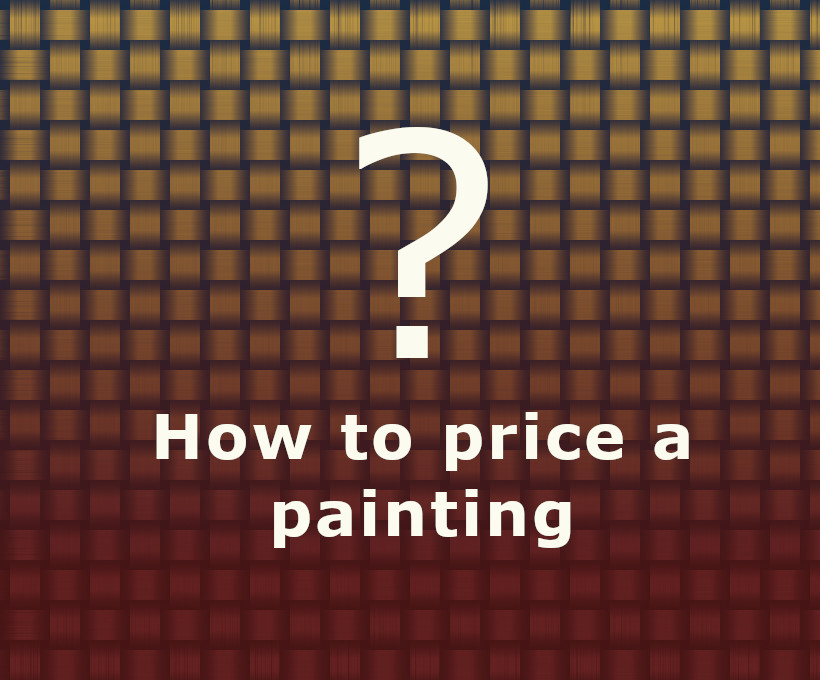Anyone can put a price on a painting. There is a professional procedure, however, though few artists follow it.
Does size matter? It certainly can. But paintings are not priced per metre. Size comes into play once other factors are sorted.
Clearly the most important element is visual impact. If the painting has no visual impact then it may as well not exist. However, visual impact isn’t always properly understood, either. For instance, a person painted a picture of pop singer Michael Jackson – this person’s second painting. Jackson liked it and the artist priced it at $2 million dollars. Jackson paid it. Visual impact in this instance was wholly determined by Jackson’s fame and personality (amounting to why he liked it and wanted it). It might not have even looked much like Jackson, or was a poor rendition – I’ve never seen it – but all that mattered was how Jackson himself felt about it.
Things like that happen all the time. A person paints a picture and puts a price on it thinking “this is what I can get”.
Visual impact should include an assessment of the artist’s technical skill, but rarely does. Few people who buy paintings have a reliable body of technical knowledge, and the same with the artists themselves. A music enthusiast would know the difference between the technical skills of an artist playing “Three Blind Mice” and one playing “Beethoven’s Fifth”. In all likelihood, most people do. Yet the technical equivalent in painting doesn’t exist. Most paintings for sale these days are done by artists with the technical skill of “Three Blind Mice”.
Few artists can wield all twelve advanced techniques as JMW Turner did – and that rare technical skill has a place in the painting’s price.
Incidentally, artworks created with advanced techniques simply cannot be copied – the level of detail and the combination of physical effects are far too complex. Please see a blog post on the difference in detail.
So at this point we can see two ways to price paintings: price the work according to what you can get, or price the work with some professional understanding.
The next professional factor is to know how many paintings the artist has done, how often are they created – how committed the artist is and where the painting sits in the artist’s historical timeline. If the artist has been painting for forty years then as a buyer you know you are purchasing from a committed artist (although they could be formulaic in approach and effort – beware). If an artist has done only half a dozen works then there’s nothing historically to suggest certainty of continuing.
The final factor to include here, in this brief outlay, is how the artist considers their piece in relation to their history. This shows up in the work itself, and in the artist’s historical body of work.
